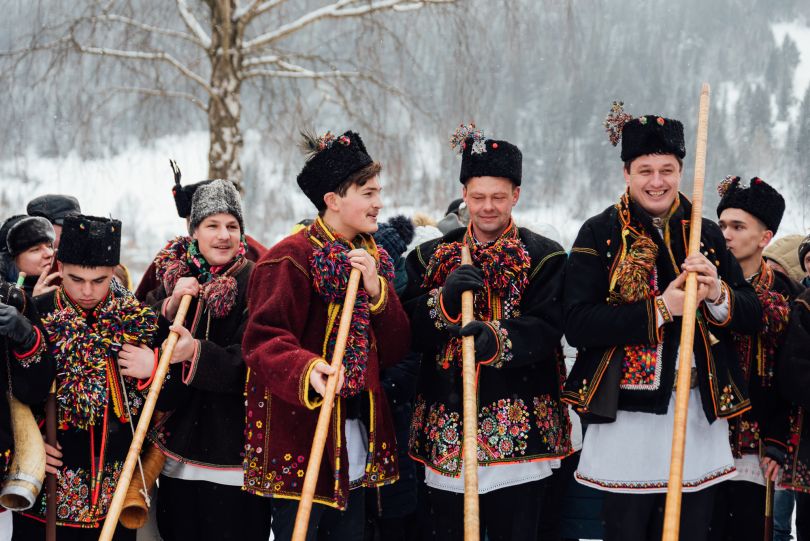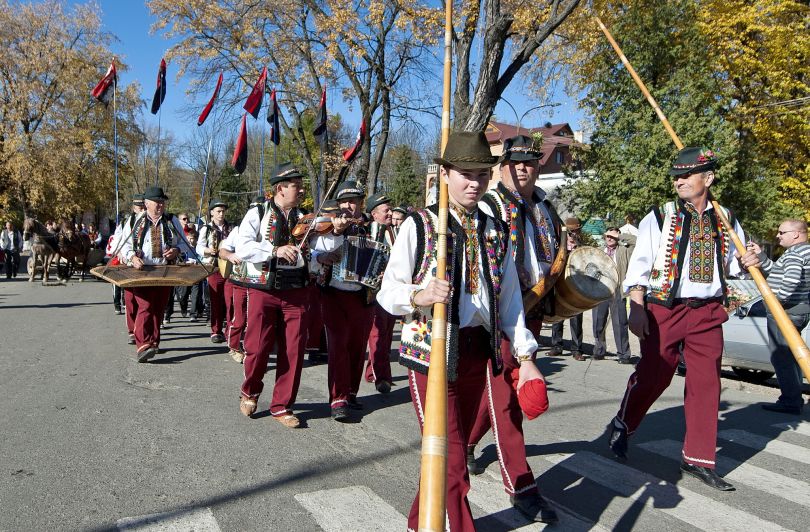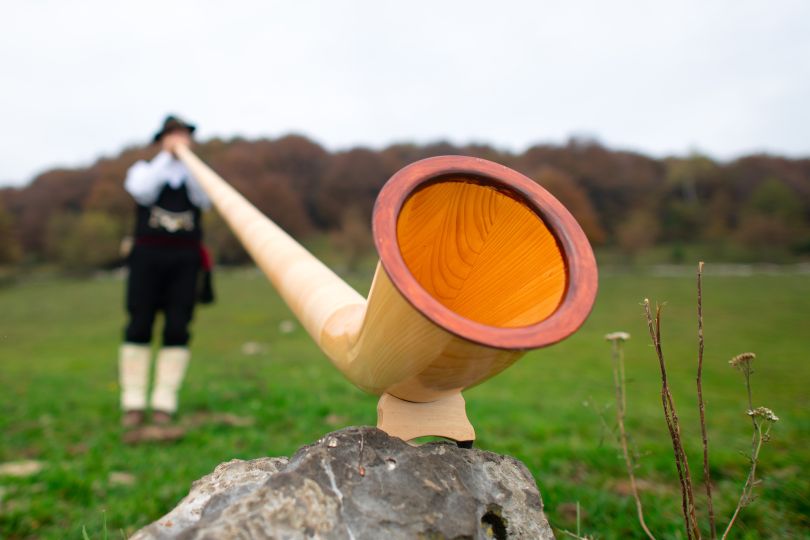History and Legends
Legend has it that the trembita was born from a long, tragic love story in the Carpathians. In this tale, a young couple named Ivan and the girl he loved were separated by fate. To overcome the distance between them, Ivan, known for his fiery red hair, invented the trembita—a musical messenger capable of carrying their sincerest feelings across the vast mountain ridges. The girl responded to Ivan's calls, and their trembita serenades became a means of communication that transcended the physical world.
Tragically, Ivan perished prematurely in a clash with a wild beast, unbeknownst to his beloved. She continued to play the trembita, unaware of her lover's fate. Eventually, consumed by grief, she ascended Mount Hoverla, the highest peak in the region, where her mournful calls echoed through the night. From then on, the mountains became known as Chornohora, the Black Mountain, forever preserving the sorrowful spirit of lost love.
Manufacturing Process
Crafted from a single wooden trunk, the trembita can reach up to eight meters long. Skillful artisans carefully select the core of the trunk, creating a cylindrical tube that tapers at the end. Traditionally, the instrument is made from spruce or pine, chosen for its excellent resonant qualities and strength.
The creation of a trembita is a meticulous artistic process passed down from generation to generation. The bark is carefully removed from the selected tree, revealing the raw material to create the instrument's ethereal voice. The wood undergoes a process of drying, carving, and shaping to form the characteristic long, narrow tube. Skilled artisans hand-carve intricate ornaments and symbols, adding both aesthetic beauty and cultural significance to the instrument.
Once the construction is complete, the trembita is coated with beeswax or flaxseed oil to protect it from the surrounding environment. At the end of the instrument, a cow horn or wood mouthpiece is attached, allowing the player to produce captivating melodies that resonate over great distances. The trembita's immense size and mystical sound symbolize strength, courage, and cultural identity in the Ukrainian Carpathians.

Historical Significance and Cultural Impact
Throughout history, the trembita has played an important role in Ukrainian daily life, folklore, various ceremonies, and traditional music. Its rich sounds echoed in the Carpathian Mountains, marking significant events, gathering communities, and invoking a sense of unity.
In ancient times, the trembita was the only means of communication among shepherds. With this instrument, shepherds could announce their whereabouts, warn of danger, or signal the end of the workday. It was an essential element in all Hutsul rituals and celebrations.
Today, the trembita symbolizes Ukrainian heritage, indicating a deep connection between people and nature.

Musical Characteristics and Contemporary Use
The sound range of the trembita, spanning 2-2.5 octaves, can create captivating tones that carry over distances of more than 10 kilometers. The trembita is central in traditional ensembles, harmonizing with other folk instruments to create enchanting melodies that evoke joy and melancholy. Today, the trembita continues to be a valuable cultural treasure in traditional music and contemporary compositions and recordings that blend modern and traditional elements.

Interestingly, a similar instrument exists in the Swiss Alps
The Ukrainian trembita bears a striking resemblance to the Swiss alphorn, a cult instrument found in the Alpine region of Switzerland. Both instruments have long, slender tubes primarily made from a single piece of wood, allowing them to produce deep, resonating sounds that can carry long distances. Like the trembita, the alphorn served practical functions - in the Swiss Alps, shepherds used it for communication and signaling. It enabled shepherds to coordinate activities across different alpine pastures and convey important information about weather conditions or emergencies. Today, both instruments have become symbols of cultural identity and are actively used in folk music, festivals, and celebrations. The trembita and alphorn are powerful symbols of national heritage, embodying deep connections between Ukrainian and Swiss people and their mountain landscapes.







